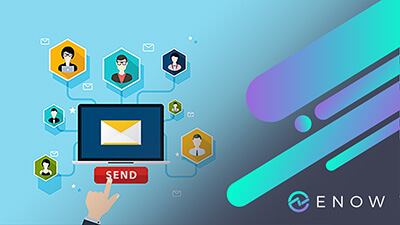Overcoming M&A Collaboration Challenges for Day 1
In 2020, mergers and acquisitions (M&A) evolved rapidly. Activity started modestly at the beginning...


In today’s ever-changing marketplace, many companies have made strategic shifts and are acquiring smaller firms or merging with larger ones to maintain their competitive position. Even outside of merger and acquisition trends across numerous industries, is the trend towards globalization. No matter what size, small or large, any company working on an international level must manage multiple Active Directories and multiple Exchange and Office 365 organizations. To streamline the communication between employees working with various divisions or OUs (organizational units) within their same organization, Outlook users can save pertinent information such as all email addresses and phone numbers for other colleagues in their Global address list.
Country boundaries are not the only barrier to communication within companies with multiple ADs and OUs. Even if you work for a small domestic firm, you still need a way to effectively combine Global Address Lists if your firm decides to synchronize all of its crucial operational data with a parent company.
When you open Outlook, compose a new email, and click on the “To” button, all email addresses of your companies’ employees will appear. When dealing with multiple divisions, OUs, or even two different companies working together consistently, the question arises: What about your colleagues working in the other company or OU? Isn’t their email and contact information just as important?
Common scenario
A well-known US health company has more than 30 subsidiaries. Each subsidiary typically has its own Active Directory with Exchange.
It is obvious that the users in these two organizations know each other, but they do not have a centralized repository of data that is necessary for consistent mail communication. The faster that employees can communicate with the necessary people, the more productive and happy everyone in the organization will be.
Challenges faced when communicating without synchronized GALs
One of the disadvantages of this topology is that Outlook users can only list the mail addresses of their own Active Directory in Outlook’s Global Address List (GAL). What happens to all the people who must communicate regularly with a colleague who is not listed in a centralized repository? The solution seems simple, but like everything else that seems too good to be true, it is! The temporary solution might be simple, but it is tedious and time-consuming, since employees add the missing contact information of colleagues to their personal address books. This is only a quick fix, however, for the next time something changes in that colleague’s contact information (i.e. phone number), the personal address book will not recognize the change, and the next phone call will mismatch. This will cause the user to have to manually make the change themselves, instead of having a simple software solution that does all the synchronization automatically.
Options in the Marketplace
Getting GAL in sync between forests is certainly a viable option, but it requires extensive preparation on the administrator’s part. Another stumbling block for IT teams attempting the synchronization of GALs is that there must be a direct connection between the data sources, which most companies prohibit due to firewall restrictions.
To keep the software more configurable and easier to implement, GALsync is focused only on synchronization of Global Address Lists between multiple Exchange Organizations; it is not intended to act as general identity management software.
The sync is done by an export of data from source Active Directory and an independent import at target side.
Data might be exchanged using ftp-server or a common Windows share, but the most powerful feature is using SMTP as protocol. This enables all companies with restricted firewall policies to exchange GAL data over the internet. In addition, data can be secured by a built-in encryption method.
Installation and customization of the software requires only 1 or 2 hours. Administrators are walked through the process by an easy-to-use, wizard-based graphical user interface. Scheduled jobs are run by an independent service.
At export side, the selection of objects is customizable (i.e. OUs, groups, etc), along with the properties included for sync. At import side, attributes’ values might be customized (i.e. suffix appended to display name), as well as some extended features for multi-organizations sync.
No additional software or hardware is needed – GALsync can be installed on any domain computer and works with Microsoft Exchange organizations based on 2010, 2007, 2003 and 2000.
To have GALs in sync between forests, GALsync is an affordable and flexible solution that does not burden the Exchange administrator with extraneous, complex identity management features.
Preparing for and ultimately synchronizing contact and user data between Active Directory forests can be difficult, time-consuming, and error prone. GALsync can set up and maintain a sync across Active Directory or Azure AD environments, or even between Active Directory and Azure AD. Now, users in multi-forest deployments and/or merging organizations can find each other in a shared address book.
Access your FREE 14-day trial to establish a multi-forest directory sync.

AmyKelly Petruzzella is a marketing executive who focuses on Microsoft Exchange, Office 365, and Active Directory trends, challenges, and business outcomes for enterprises. Over the years, AmyKelly regularly engages with Gartner industry analysts, and she has been recognized several times for Top 50 Microsoft Marketing Excellence. She is a frequent speaker and blogger and an industry veteran who advocates for women in technology.


In 2020, mergers and acquisitions (M&A) evolved rapidly. Activity started modestly at the beginning...


A critical milestone during a merger or acquisition for enterprise end-users is Day 1. This is the...